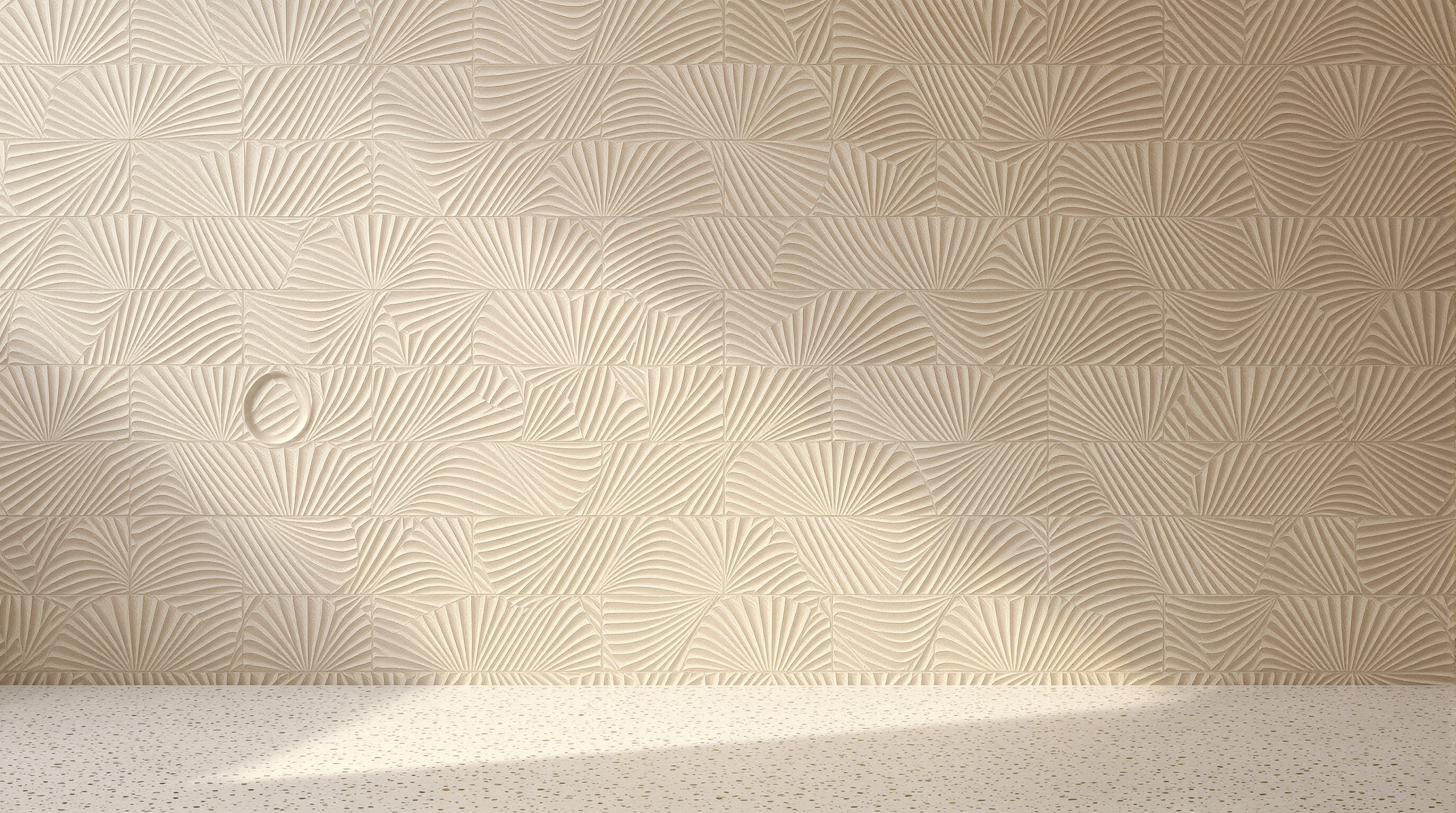Sustainability in Floor and Tile Design
Eco-friendly materials reshaping tile production
Sustainable materials are becoming all the rage in flooring and tile manufacturing these days. Recycled ceramics, bio resins, and reconstituted stoneware are catching on fast, with around two thirds of manufacturers expected to switch over by next year according to recent reports. Some companies are mixing things up with hybrid materials made from old glass scraps and farm waste products. These alternatives cut down on the need for fresh stone extraction without compromising strength. Take for example a type of stoneware mixed with about a third hemp ash. It holds up just as well as regular ceramic tiles but manages to slash carbon footprints nearly in half, according to latest findings published last year.
Recycled content and low-impact manufacturing processes
Top manufacturers are starting to use between 70 and even 100 percent recycled materials in their tile production through closed loop systems. This has helped keep around 12 million tons of construction debris out of landfills every year. The switch to energy efficient dry pressing methods cuts down on kiln heat requirements by roughly 40 percent, which means much less carbon dioxide gets released during manufacturing. Water conservation efforts are also making a difference, saving approximately 650 gallons for each thousand square feet of tile made according to Front Materials Sustainability Index data from 2025. For the construction industry looking to meet those ambitious climate targets set by the Paris Agreement by 2030, these kinds of green advancements represent real progress toward reducing our overall carbon footprint across building projects nationwide.
Longevity and recyclability of modern tile materials
Engineered tiles today last well over 50 years, which is actually three times longer than what was available back in the 90s. Plus, they're pretty green stuff too since around 95% can be recycled because nobody needs glue to install them. According to some research from the Ponemon Institute in 2023, companies that switched to these modular porcelain tiles ended up saving about $740k on maintenance and replacement costs across 15 years. The secret? These tiles are built with disassembly in mind. When they reach the end of their life, workers just crush them up and reuse the pieces as building material aggregate. This creates a complete loop where materials keep getting used again and again, all while still performing just as well as new products would.
Bold Color Use and Color Drenching in Floor and Tile
What is Color Drenching and How It Transforms Spaces
When we talk about color drenching, what we really mean is covering whole interior spaces from wall to floor to ceiling with one main color or a group of matching colors that work together. The effect is pretty amazing actually, creating this sense of continuity throughout the space. It works really well in small bathrooms for instance, where walls and floors made of similar colored tiles can make the room feel bigger than it is. A recent study called the Tile Innovation Report from 2024 found something interesting too: around three quarters of design professionals have started using this approach specifically for making smaller rooms (those under 100 square feet) look more spacious. And when they match the grout color to the tile tones, there's something about how everything blends together that just looks so elegant, particularly in kitchen areas and those first impression spots like front entries.
Bold Hues in Bathroom Tile Trends for 2025
The trend forecasters are talking about for 2025? Think emerald green mosaics and those striking cobalt blue chevrons. According to Surface Design Council numbers from last year, nearly 6 out of 10 manufacturers plan to boost their range of bold colors. Wet rooms are getting full height treatments now with some seriously daring shades - imagine walls painted in deep merlot reds or volcanic blacks. What makes these colors pop even more is the addition of 3D textures on surfaces, which really intensifies how vibrant they look. When it comes to showers, designers are combining those precious stone-like wall tiles with floors made of micro cement in similar hues. The result feels luxurious without being over the top, creating spaces where every element works together beautifully.
Psychological Impact of Saturated Color Palettes
Deep plum and burnt orange tiles influence mood and comfort—research shows they increase perceived room warmth by 3–5°F (Environmental Psychology Journal 2023). Strategic guidelines include:
- Cool tones (navy, sage) in south-facing rooms to balance sunlight
- Warm hues (ochre, terracotta) in north-facing areas to add coziness
Neurological studies confirm monochromatic teal bathrooms reduce stress biomarkers by 18% compared to neutral schemes.
Case Study: Color-Drenched Residential Bathroom Redesign
A 45 sq ft 1930s bathroom was transformed using color drenching:
- Ceiling-to-floor matte black zellige tiles
- Matching 2" hexagon floor tiles with charcoal grout
- Brass fixtures echoing tile undertones
Post-installation surveys showed 92% of users described the space as “spa-like,” a marked improvement from its original fragmented layout. Thermal imaging revealed the dark palette retained 15% more heat during winter months.
Warm Whites and Earthy Tone Palettes in Floor and Tile
Shift from Cool to Warm-Toned and Natural Color Palettes
Design trends have definitely shifted away from those cool gray and stark white color schemes we saw everywhere just a few years back. Now, people are gravitating toward warmer hues inspired by nature. Think terracotta, sandy beiges, and rich honey oak tones that seem to be showing up on tiles all over town. These earthy neutral colors work surprisingly well whether someone wants a sleek modern look or something more rustic and cozy. Plus, they hide scratches and scuff marks much better than lighter colors do in busy spaces like entryways and kitchens where foot traffic is constant.
How Earthy Tones Enhance Modern Organic Tile Design
Colors that feel grounded work really well with rough textures such as stone that's been brushed or surfaces with a matte finish, which gives off that natural vibe we all love these days. These earthy tones also go hand in hand with wooden cabinets and houseplants around the home, something that taps into our innate desire to connect with nature. A recent look at materials from last year showed that warmer colors actually help tie together spaces that are open plan, so they're great for bringing peace to areas like kitchens and bathrooms where people want to relax after a long day.
Data Point: 68% Increase in Warm White Tile Sales (2022–2024)
| Tile Category | Sales Growth | Time Period |
|---|---|---|
| Warm White Tiles | 68% Increase | 2022–2024 |
This growth reflects consumer preference for tones that combine brightness with warmth—offering a livable alternative to clinical whites. Manufacturers note these tiles maintain consistent appearance across lighting conditions, unlike cooler shades that can appear sterile in low light.
Texture and Dimension in Tile Surfaces

Rise of 3D and Tactile Tile Surfaces
The days of flat tiles are numbered as more people opt for dimensional designs that actually grab attention both visually and physically. Think about those three dimensional tiles with cool geometric patterns or those wavy ones that cast interesting shadows on walls making them stand out as centerpieces. The latest numbers from the Material Innovation Report show something pretty interesting too around 7 out of 10 designers these days prefer specifying textured tiles especially for bathroom walls and accent areas because the added texture really improves how people interact with spaces. Plus there's another benefit nobody talks about enough textured porcelain not only looks great but also helps prevent slips and falls while still managing to look like real stone or wood without costing an arm and a leg.
Fluted Tile Design and Textural Finishes
Fluted patterns feature rhythmic vertical grooves that diffuse light elegantly, blending industrial precision with organic warmth. Ideal for kitchen backsplashes and fireplace surrounds, these designs are crafted using advanced pressing techniques that ensure durability in humid environments without compromising aesthetic depth.
Tactile Appeal in Terrazzo Flooring and Textured Designs
Terrazzo’s revival includes new textural enhancements such as raised aggregates and micro-ribbing, which improve slip resistance while preserving the material’s polished character. Designers report a 40% rise in demand for these hybrid finishes in entryways and commercial spaces where safety and style are equally prioritized.
Smooth vs. Textured Finishes in High-Traffic Areas
Finish selection depends on function: glossy tiles remain popular in small spaces for their reflective quality, but textured finishes dominate high-use zones like mudrooms and lobbies. A 2024 durability study found subtly embossed tiles hide scuffs three times longer than smooth counterparts, making them a practical choice for active households.
Innovative Layouts and Grout Integration in Floor and Tile Design
Revival of Mosaic Patterns With Contemporary Twists
Classic mosaic patterns are being reinterpreted with geometric precision and mixed materials. Designers now combine hexagonal ceramic tiles with metallic inlays or integrate terrazzo fragments into penny-round layouts, creating a dialogue between tradition and innovation.
Creative Tile Placement Beyond Traditional Layouts
Diagonal orientations and asymmetrical grids challenge conventional installation norms. Some designers are aligning tiles with architectural curves rather than straight lines, enhancing spatial flow in bathrooms and living areas.
Herringbone and Stacked Tile Patterns for Visual Impact
| Pattern Type | Optimal Tile Size | Best Applications |
|---|---|---|
| Herringbone | 3"x12" | Entryways, feature walls |
| Stacked Bond | 24"x48" | Open-concept floors |
| These directional layouts introduce movement, with 72% of interior designers specifying elongated formats for residential projects in 2024 (Tile Council of North America). |
Floor-to-Ceiling Tile Applications and Vertical Layouts
Full-height installations elevate tile from functional surface to immersive environment. Vertically stacked tiles in shower niches create an illusion of height, while continuous matte porcelain runs from floor to wall for seamless transitions.
Grout as a Design Element: Contrast vs. Matching Finishes
These days, grout isn't just functional anymore but has become a key part of interior design decisions. According to recent research from the 2024 Material Flexibility Study, nearly 6 out of 10 homeowners rank grout color right up there with tile choice when planning their spaces. Interior designers are getting creative too, using deep charcoal grout lines to really make those white subway tiles pop against walls. Some even go for metallic epoxy options that catch light differently across geometric tile arrangements. The market keeps evolving with new products like color shifting grouts that actually change appearance based on room lighting conditions, creating something that looks fresh and interesting as days pass by.
FAQ
What makes eco-friendly tiles sustainable?
Eco-friendly tiles are sustainable due to their use of recycled materials, bio resins, and less energy-intensive manufacturing processes, reducing the carbon footprint.
How do color drenching techniques make small spaces appear larger?
Color drenching uses similar colors on walls, floors, and ceilings to create continuity, making small spaces like bathrooms feel larger.
What is the benefit of warm-toned tiles over cool-toned tiles?
Warm-toned tiles, inspired by nature, hide scratches better and provide a cozier ambiance compared to cooler shades.
How do textured tiles enhance safety?
Textured tiles improve slip resistance while providing visual appeal, making them ideal for high-traffic areas.
Why is grout color important in tile design?
Grout color impacts the overall aesthetic of tile design, offering options like contrast or matching finishes to enhance visual appeal.

